Table of contents
Get to know the main yoga poses!
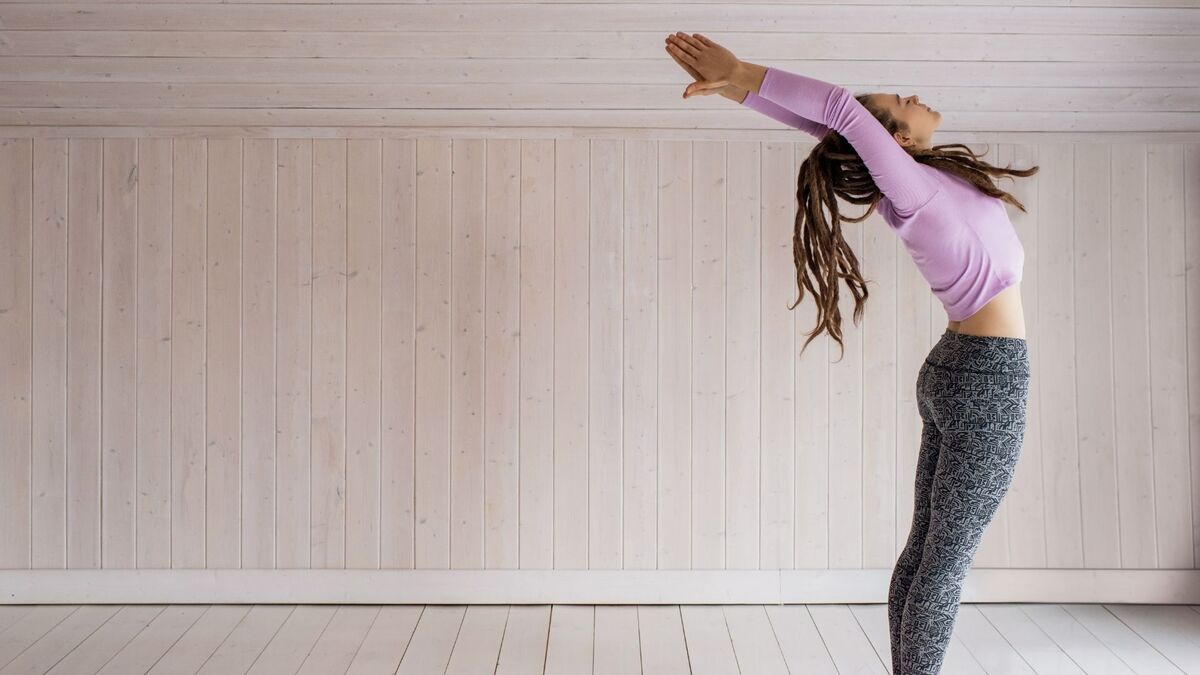
The practice of yoga is very ancient and offers many benefits for health in general, both physical and mental. Some of the main points to note about practicing yoga on a daily basis is that it will make you stronger and more flexible.
In addition to bringing some other effects to your life, such as balance, stress relief and it can also benefit the healing of various diseases. Within the practice of yoga there are various methods that are applied, such as meditations and exercises that encourage the body and mind.
The ways of meditating and exercising vary according to the objectives and the postures used. For those who are interested in incorporating this healthy practice into their day, it is recommended that they start by learning a little more about the most common and simple postures for beginners so that they can move on.
See more about yoga postures!
Understanding more about yoga

Before you start practicing yoga, it's worth knowing a little more about its history, objectives and the changes the practice has undergone over the years, while maintaining its main focuses.
Yoga can benefit various aspects of life, such as physical and mental health, and will work according to the practitioner's quest. The benefits can be felt throughout the process, such as improvements in mental, physical and even spiritual aspects.
Learn more about the benefits and practices of yoga!
Origin and history
The origins of yoga and its philosophy can be traced back to India, where the practice increasingly became part of the local culture, beginning around 5,000 years ago.
Nowadays it is known not only as a practice that aims to improve health, but it is also adopted as a lifestyle for many people who take up yoga.
The work carried out within yoga connects the body and the mind at the same time. There is no clear definition in history that shows the exact creators and other details about the practice, but there are some views about it, that it was created by Shiva.
What is it for and how does it work?
Yoga brings a much better quality of life in many ways, as it unites the mind and physical body in general, and even spiritual aspects can be taken into consideration when practicing yoga.
It serves to bring greater balance to the body and mind, relieving pain caused by stress, adding more flexibility to the body and also being an excellent aid to help in the healing processes of illnesses. Different stretches and postures are performed that can benefit the body in various ways.
Benefits of yoga
The benefits of yoga can be felt as soon as you start practicing, as it aims to relieve pain in both the body and the mind, working on both in a unified way.
Some of the points to highlight in relation to physical health are the fact that yoga practices benefit those suffering from back pain, anxiety, stress and other issues, bringing physical relief and much greater control to people who have tiring routines.
Mental and emotional benefits
On the mental and emotional front, yoga is highly recommended for bringing more control to actions, relieving stress and anxiety.
People who suffer from these problems routinely in their lives benefit from the practice, as they are able to exercise some actions that can bring a much greater sense of well-being, with deep breathing techniques, to bring to consciousness aspects that end up being suffocated by anxiety and everyday problems.
Physical benefits
In relation to physical issues, yoga brings new ways of transforming your body with actions that evolve as the practitioner feels able to do so.
Because the positions and postures used in yoga make them more flexible as they progress through the process, they control their breathing and are also aware of their bodily capacities so that they can achieve greater control when carrying out the procedures in a balanced and safe way.
Types of yoga postures

Yoga works on various aspects of the body, so there are postures that can be done in different ways that will benefit specific areas.
There are standing postures, balancing poses and many other practices within yoga that can be used and developed as the process progresses, according to the practitioner's goals. Knowing these postures makes the process easier and constantly evolving.
See below!
Standing postures
Among the various postures that are used in yoga, the practice can also be done with poses that are performed standing up.
The aim of these is to build strength and balance, as well as to help the practitioner acquire a little more body awareness about how their body will act in the poses in question, what their limits are and other aspects.
Some of the most important yoga poses are even done standing up, which ensures more strength for the lower body and increases flexibility in the hips.
Balance poses
The balancing poses in yoga, as the name suggests, serve to bring more strength to the body, giving it enough balance for other activities to be carried out fully.
These poses are also important for acquiring more control of the muscles in general. Balance poses will also be important for practitioners to seek greater mental stability throughout the processes that will be developed within yoga.
Backbends
The poses called backends are important for accessing certain areas of great value, not only physically, but also mentally. These poses bring great benefits for emotional issues.
As the push-ups are performed, the chest will open up and stimulate the heart chakra, giving the opportunity to release stored emotions such as fear, anger, frustration, sadness and others. Positive emotions such as joy and love can also be released.
Sitting postures
The seated postures will give you more flexibility and will also be important for beginners right from the start, where they will get to know the yoga techniques in more depth.
This is because these poses are simpler to perform than standing poses, which require more practice and stability to actually do.
These poses also help us to understand more about each other's musculature and allow us to gradually stretch these muscles.
Resting or supine postures
Resting poses, as the name suggests, are important for resting. They can even be done with the support of a partner who can help with the process and both of you will benefit from the effects.
In this way, rest also gives the practitioner the chance to interact with their energy and that of their partner, providing a more dynamic rest throughout the process of learning the other poses.
Yoga poses for beginners
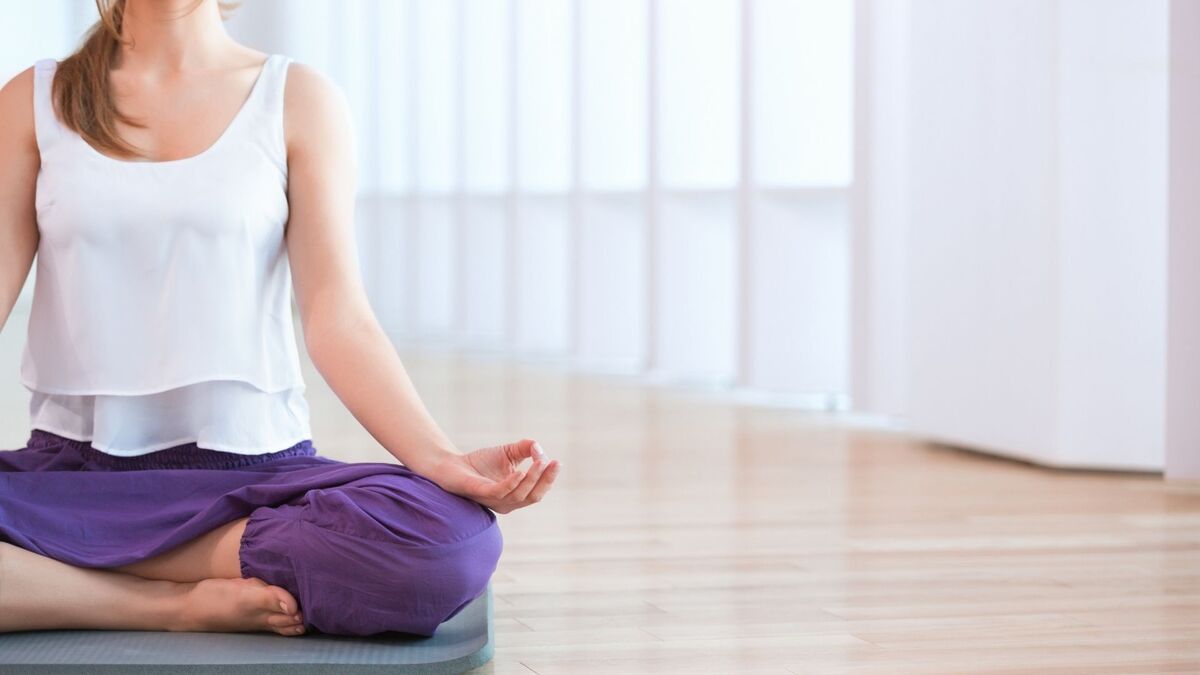
Despite being a practice that brings many benefits to life in general, yoga isn't as easy as most people might mistakenly imagine. Some poses and techniques will demand a lot from both your physical and mental aspects, so it's very worthwhile developing gradually, learning techniques, poses and other details gradually.
For beginners, some poses are more recommended so that they can learn little by little and develop positively.
Learn some poses for beginners!
Shavasana - corpse pose
This posture is often used to introduce new practitioners to yoga as it won't require too much from them. Also known as the corpse posture, despite its curious name there is a reason for this: it is done lying down.
It's a very versatile pose that gives practitioners many opportunities to enter the world of yoga, as it can even be done before bedtime. One of the main aims of this pose is even to keep bad thoughts at bay so that you can get a good night's sleep.
Tadasana - mountain pose
The mountain pose is also an excellent way for beginner yoga practitioners to begin to understand the techniques contained in this ancient practice. This is a pose that should be used first thing in the morning, as it has great health benefits.
The hands, back and spine are some of the important points it can benefit, but the whole body can be impacted by this posture in some way. It is even recommended for people with bad posture, as it corrects it.
Uttanasan - forward bending posture
This pose is a little more different from the others, where beginners can learn a little more about yoga and strive to evolve in their practice.
In this case, forward bending is used with the aim of relieving stress and can benefit people who suffer from anxiety. It is a very powerful posture that brings positive sensations, relief for the muscles and also for the connective tissues, even preventing muscle pain.
Utkatasana - chair pose
The chair posture in turn aims to help stretch the body, but it also helps bring mental relief to practitioners.
The purpose of this posture for beginners is to ensure that throughout the yoga process they have greater flexibility so that they can evolve and move on to more advanced postures. Some of the points strengthened by this posture are the calves, ankles, thighs, knees and shoulders.
Adho Mukha Svanasana - downward dog pose
The downward dog pose is also highly recommended for yoga beginners, as it serves as a transition from some poses to others.
It is also considered to be a good rest during these transitions so that practitioners can acquire greater flexibility and strength in their limbs to continue performing the other poses afterwards. The benefits of this pose help to energize the body and mind in general.
Trikonasana - triangle pose
The main purpose of the triangle pose is to strengthen the muscles. This is a very good yoga exercise for beginners who still have little knowledge.
It is even highly recommended for pregnant women, as it helps to reduce blood pressure and stress so that the body's blood functions are better developed. It also benefits the practitioner's balance and concentration so that they can continue with the rest of the exercises.
Vrksasana - tree pose
The tree pose is important for the physical and mental aspect of beginner practitioners because it brings much more balance in both directions. It is used to add stability and energise practitioners throughout the process.
This name comes from the fact that the balance provided by the posture in question resembles the effect of a root, giving practitioners more firmness and stability. This is an important process for developing other, more difficult exercises in the future.
Baddha Konasana - throne posture
This posture is used to promote the opening of the hips. In general, the aim of this posture is to relieve pain in this area, such as problems that appear in the sciatic nerve, causing inflammation in this nerve which can cause very intense pain.
Thus, this practice is designed to bring greater relief to people who suffer from pain in the hip area, and is designed to bring relief to the lower back as well. In some cases, the practice is done with the use of a yoga belt to open up the hips more.
Setu Bandha Sarvangasana - bridge pose
In order to make it a little more difficult for beginners, but still maintain a more relaxed pace so that they can develop, the bridge pose is a way of strengthening the legs.
This pose is suitable for people looking to strengthen their balance in general, starting with the legs. It can provide relief for the back, legs, neck and also the chest. This pose also gives practitioners great balancing power.
Paschimottanasana - pincer posture
The pinch posture is ideal for beginners because you don't need to be very skilled at it yet. It's important for stretching the whole body, from your head to your heels.
In this way, it can be used before starting more advanced exercises so that the body is warmed up for it. This is even a very positive posture for women to use after giving birth, as it has effects that can tone the pelvic organs.
Matsyendrasana - lord of the fishes posture
The lordly posture of the fish is known to improve lung health, because the way it is performed increases the supply of oxygen to the organ in question, and can therefore benefit people who suffer from respiratory problems.
It also adds much more flexibility to the functions of the vertebrae in the spine. This posture can also bring benefits to those suffering from diabetes and hip joint problems.
Yoga postures for intermediate practitioners
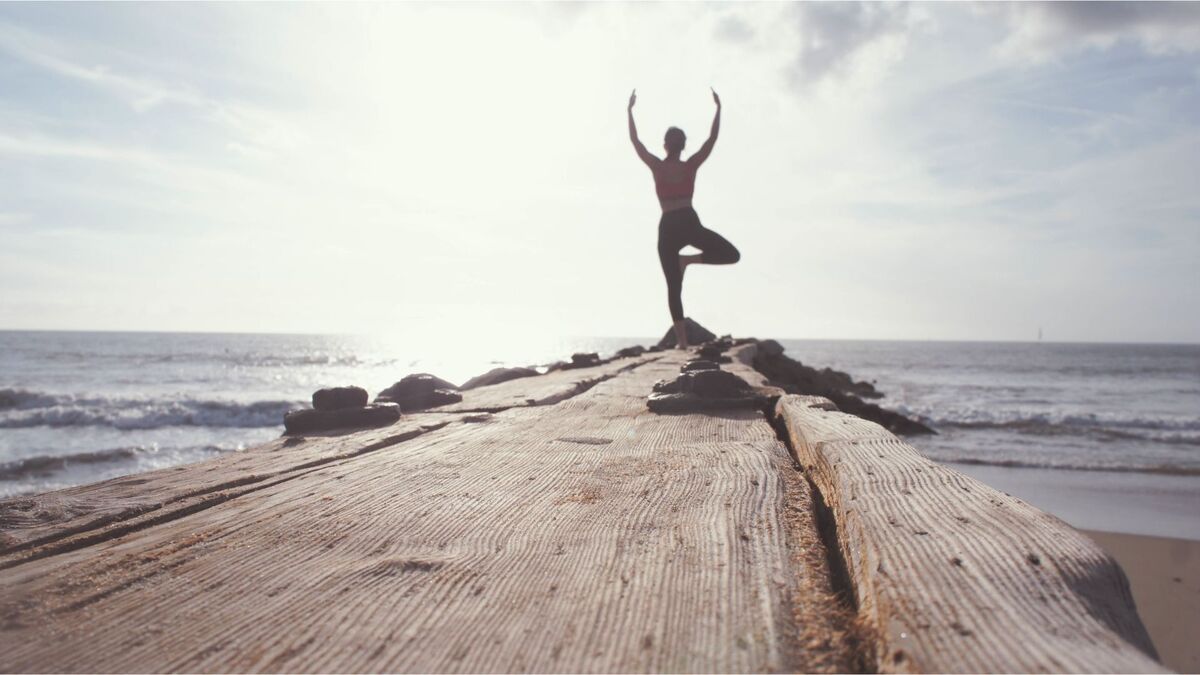
For yoga practitioners who already know a few postures and ways to develop, it's possible that they'll move on to more complex postures that will demand more from their bodies.
In this case, the postures indicated for those at an intermediate level will be more difficult to perform, but they are equally important and positive for the proper development of the techniques contained in yoga.
Check out some techniques for intermediate practitioners!
Kumbhakasana - plank pose
The plank posture is one of the most common for people who are advancing in yoga. It provides extra preparation for the arms, as well as strengthening one's inner strength and the search for spiritual balance, which is also very present in this process.
One of the purposes of this pose is to ensure that practitioners can gain stronger muscles in the abdominal region. Finally, it also has a full-body stretching effect.
Urdhva Mukha Svanasana - upward facing dog pose
The upward-facing dog pose is very common and is learned at the very beginning of the transition from beginner to intermediate yoga practice. It is very important and has strengthening effects and benefits for both body and mind.
One of the points most worked on by this yoga pose is the chest, which will be opened up and stretched more in the process, so the spine will benefit greatly from this type of activity.
Ardha Chandrasana - half moon pose
The benefits of the half-moon pose are that yoga practitioners seek calmness, stillness and concentration. The main aim of this type of exercise is to provoke this type of calm sensation so that they can seek greater balance, both physically and mentally.
It strengthens the ankles, abdomen, legs, hips and spine, as well as stretching areas such as the groin and legs in general.
Ardha Halasana - half plow posture
This position, half plough, is very similar to others but has very specific objectives. It promotes the strengthening of the abdominal area of the body. It also stimulates the organs that are in this area to benefit, such as those that can cause constipation.
This is why it is highly recommended for people who suffer from these intestinal problems, as it can cause more intense movement in this area to bring relief.
Virabhadrasana - warrior's posture
Warrior pose is one of the most common yoga poses. Its name comes clearly from the way it is performed, where you act as if you were on the defensive in the face of an attack.
The aim of the posture is to bring benefits such as flexibility to the body and strengthening of the legs and arms, and it is positive for pregnant women, so that they remain active during this process of pregnancy.
Parsvottanasana - position of intense lateral stretching
This is a stretching pose, as its name suggests. What is also highlighted by its name is the fact that it is performed in a more intense way, which is why it is suitable for practitioners who are at an intermediate level.
This is also due to the fact that it will require more balance from you in order to be done correctly. This pose provides many energetic and physical strengthening benefits too, to ensure more balance for your back for example.
Ardha Pincha Mayurasana - dolphin pose
Known as dolphin pose, this yoga pose is important for relieving pain caused by compression.
In general, this is an exercise that benefits regions such as the vertebrae, so people who suffer from very intense back pain because they spend a lot of time sitting due to work and other activities, can benefit from this type of exercise to bring more relief. The sensation of decompression can be felt immediately when the exercise is performed.
Dhanurasana - bow pose
To strengthen the ankles, thighs and groin, intermediate yoga practitioners should use the bow pose. It can also help relieve abdominal pain and strengthen this area.
The benefits of this posture are also felt in the spine, bringing greater relief to tensions in this area. People who suffer from problems with organs such as the kidneys, liver, pancreas and intestines can also gain many improvements from this practice.
Ushtrasana - camel pose
The camel pose relieves back pain and promotes better blood circulation. It also benefits the mind, promoting relaxation.
Those who deal with issues involving the respiratory system can also use this pose to improve their breathing. Another effect felt with this pose is the reduction of fat in the body.
Vasisthasana - side plank position
The side plank is a more complicated position to perform, which is why it should only be started at a higher level, in this case intermediate.
In this way, practitioners already have greater stability so that they can perform the exercise in question, which requires strength in the arms and torso. This exercise mainly strengthens the upper body, and is important for ensuring more balance as well.
Uttanpadasana - raised leg pose
The position known as leg raise in yoga is beneficial for people who suffer from back pain and stomach problems.
The way it is performed brings greater relaxation to the back, stretching it in the right way and thus ensuring relief and decompression in the area. It can be done by lifting one leg at a time, or both at the same time, depending on the practitioner's goals.
Yoga postures for advanced practitioners
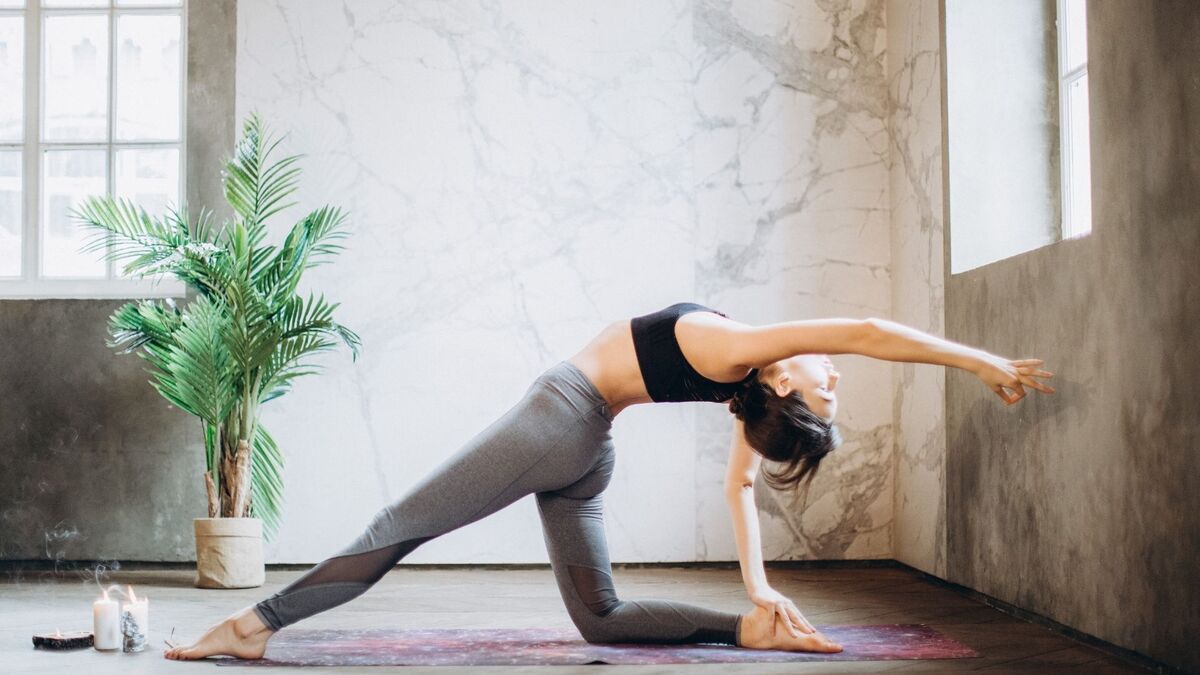
Yoga practitioners who are moving towards a greater advance in terms of the postures they will adopt in their practice can learn a little more about the poses that are adopted in this sense before they begin, finding out about their benefits, actions on the body and other points.
Here are some of the main poses you can add to your yoga routine once you reach the advanced level.
See in detail!
Naukasana - boat posture
The boat pose is much more intense than other practices seen at beginner and intermediate levels. It will require practitioners to have strengthened their arms and legs a little more in order to be able to maintain the right form.
This posture has benefits for the lungs, liver and pancreas. Another important point to note is that this posture improves blood circulation.
Uttitha Hasta Padangustana - foot posture with outstretched hand
Known for stretching several parts of the body at the same time, the hand-foot posture benefits people who suffer from pain in areas such as the lower back, hips, legs and hands.
It performs a real massage on these areas of the body as the stretching is carried out, so it is a practice that will require greater control of the body's posture, but which will bring various benefits to several areas at the same time.
Garudasana - eagle pose
The eagle pose is only used with advanced level practitioners because they already have the body stability and balance needed to be able to hold this pose, as there is a great demand on the legs and torso to be able to hold this pose.
Despite this, it promotes great flexibility for the spine, relieves abdominal pain and also makes the lower back much stronger.
Bakasana - crow's pose
Among the improvements that the crow pose can offer your body and mind, one of its greatest achievements is the fact that it guarantees an important and very positive effect on focus.
This is a posture that makes practitioners develop a much greater focus on various aspects of their bodies. The body posture is also able to add more strength to the upper body, especially the arms which become much stronger.
Urdhva Dhanurasana - wheel posture
The wheel pose is one of the most intense yoga poses. It requires practitioners to have a lot of control and strength in their arms in order to perform it well. It stimulates the energy, nervous and endocrine systems in a very positive way.
It also promotes an expansion of the rib cage and makes the muscles more elastic and stronger at the same time. Another benefit of this posture can be felt in the spine, which will become much more flexible for other exercises.
Adho Mukha Vrksasana - standing position with hands on the wall
This is a position that promotes balance for the heels, and the still hand provides more stability so that this pose can be held for longer.
The benefits of this pose can make life easier for people who suffer from shoulder, arm and neck pain. This exercise will generally work the muscles of the upper body, making them stronger, including the wrists due to the way they are used to hold the position.
Shirshasana - inverted head posture
The practice of the inverted head posture is recommended for people who are at a more advanced level of yoga because it is difficult to remain upright as the exercise requires without risking accidents due to lack of practice and balance.
This posture increases blood circulation and also helps people who suffer from constant headaches.
Salamba Sarvangasana - shoulder support
As the name suggests, this pose gives more support to the shoulders, thus strengthening the upper body in general. It is an inverted pose that allows practitioners to stretch the muscles in the spine and abdominal area of the body.
The practice brings important improvements to these regions, and can also benefit some other points, such as stimulating the thyroid gland.
Further information about yoga
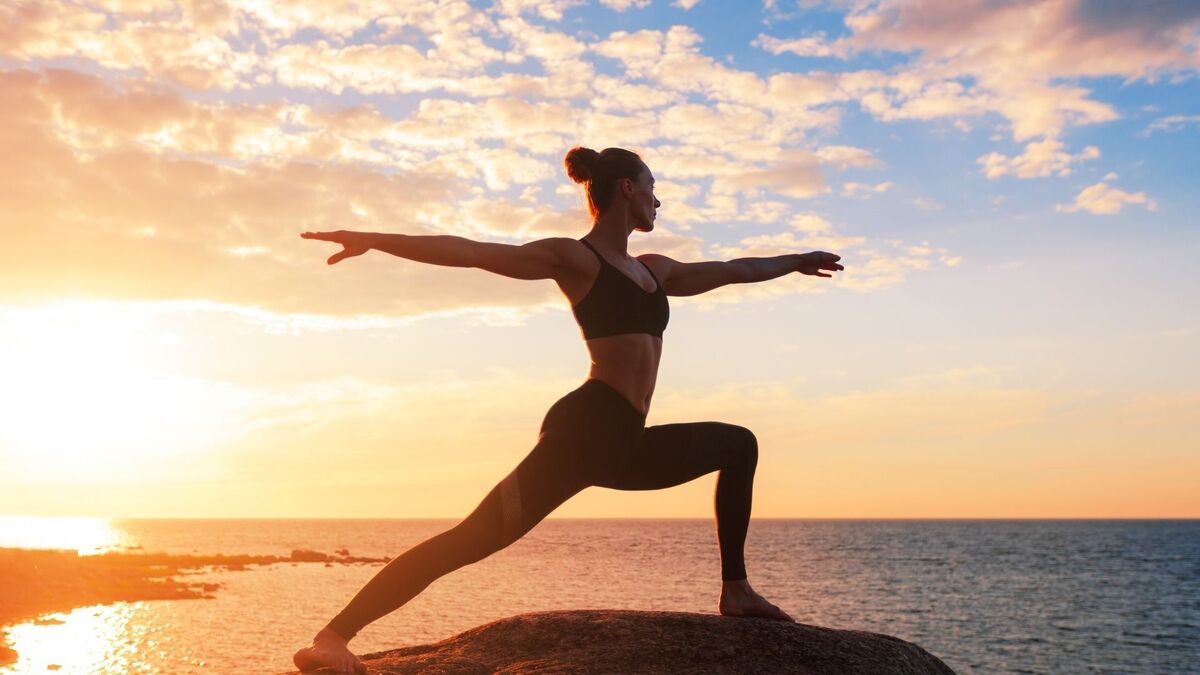
The practice of yoga is very old and over the years it has changed and brought new ways of seeing the effects of these exercises that not only benefit the body, but also bring practitioners into deep contact with their minds and spirituality.
These are some of the points that make yoga a more complete exercise, as it treats the body and mind in general.
Find out more about yoga below!
The main difference between yoga and other physical activities
What sets yoga apart from other types of physical exercise is precisely the fact that important methods are used within the practice that will not only strengthen the physical body, but will also bring improvements aimed at the mental and spiritual. As such, it is a practice for people who are looking for a way to unite these two aspects and bring improvements to various fieldsdifferent parts of their lives.
Can anyone practice yoga?
The practice of yoga is very democratic, and this is one of the principles that is highlighted by the people who promote these mental, physical and spiritual exercises. In this way, anyone who wishes can take part in yoga practices, developing different skills in the process.
The important thing is that when you decide to practice yoga, you should be aware that it will require a lot of persistence, so it's suitable for people who want to live different experiences and who are looking for constant evolution.
How to start practicing yoga
To begin practicing yoga, it is recommended that beginners develop a routine so that the exercises are part of their day in general.
So it's important that they find safe, quiet environments that promote the peace they need for exercise to bring benefits not only to the body, but also to the mind. It's also important to exercise regularly, as it's a constant evolution.
Precautions and contraindications of yoga
Some of the main precautions and recommendations that should be made and reinforced when starting to practice yoga is to respect each person's time. As yoga seeks constant growth and progress, it is important not to rush.
Exercise can be intense in some cases, and if done incorrectly can cause harm. So respect your body, take it easy and be safe.
Evolve in yoga and learn more and more positions!
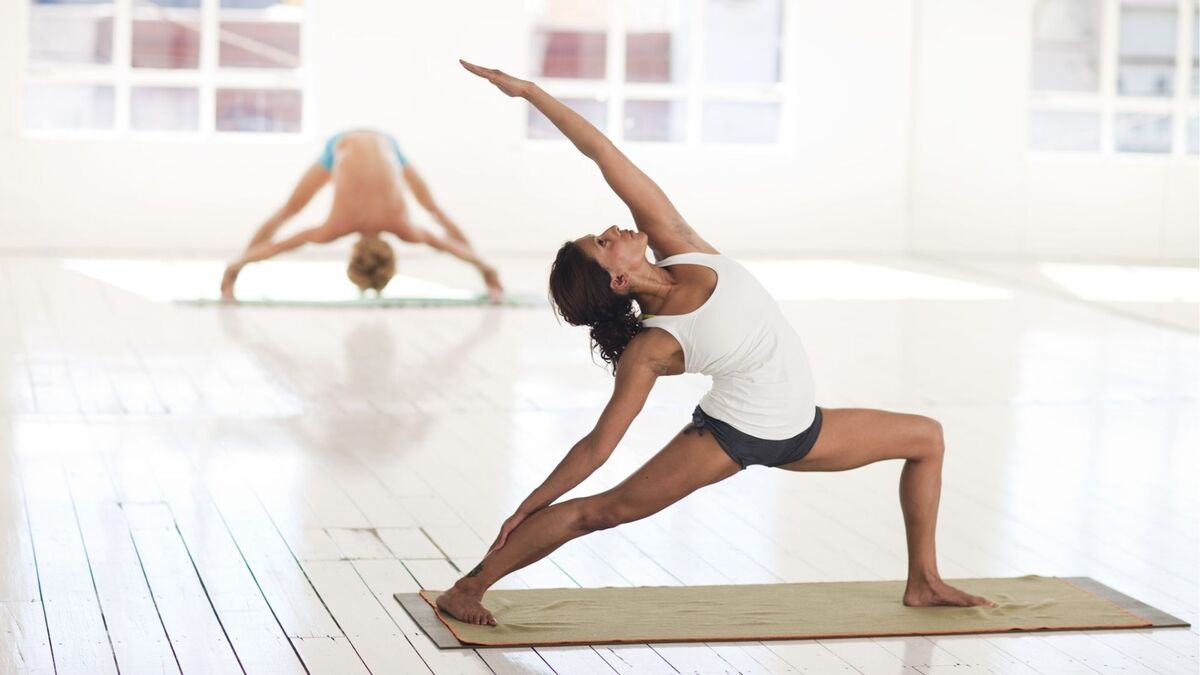
Yoga is a transformative practice that can bring many benefits to both physical and mental health, so it's important to learn every day to develop new skills and acquire more and more knowledge about postures, exercises and new practices that can be added to your day.
Learn new positions as you feel ready, respecting your time and also the way your body reacts to each exercise. Don't forget to develop a good routine so that the exercises achieve your goals, establish regular schedules that will make a difference to your daily life.

